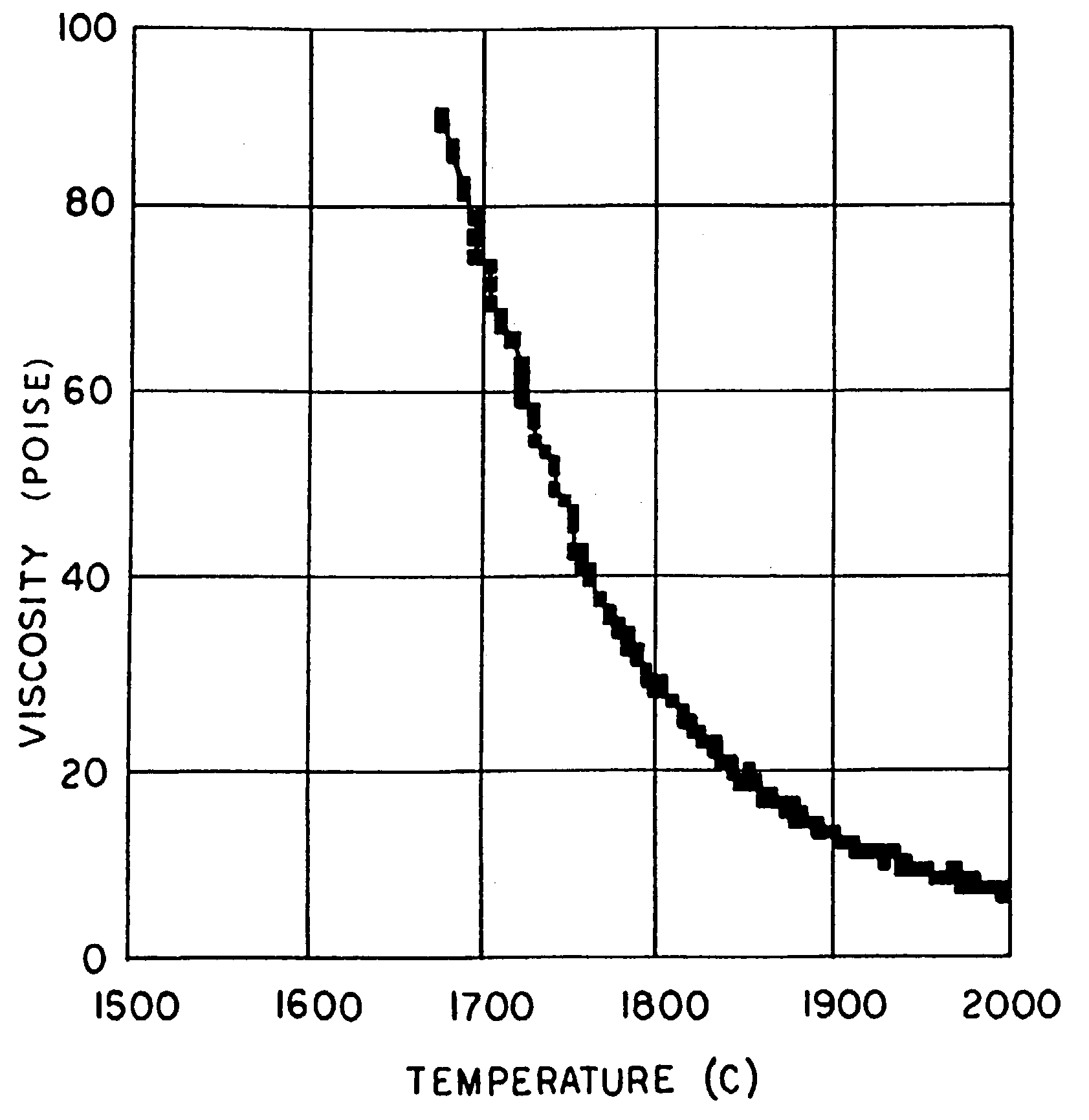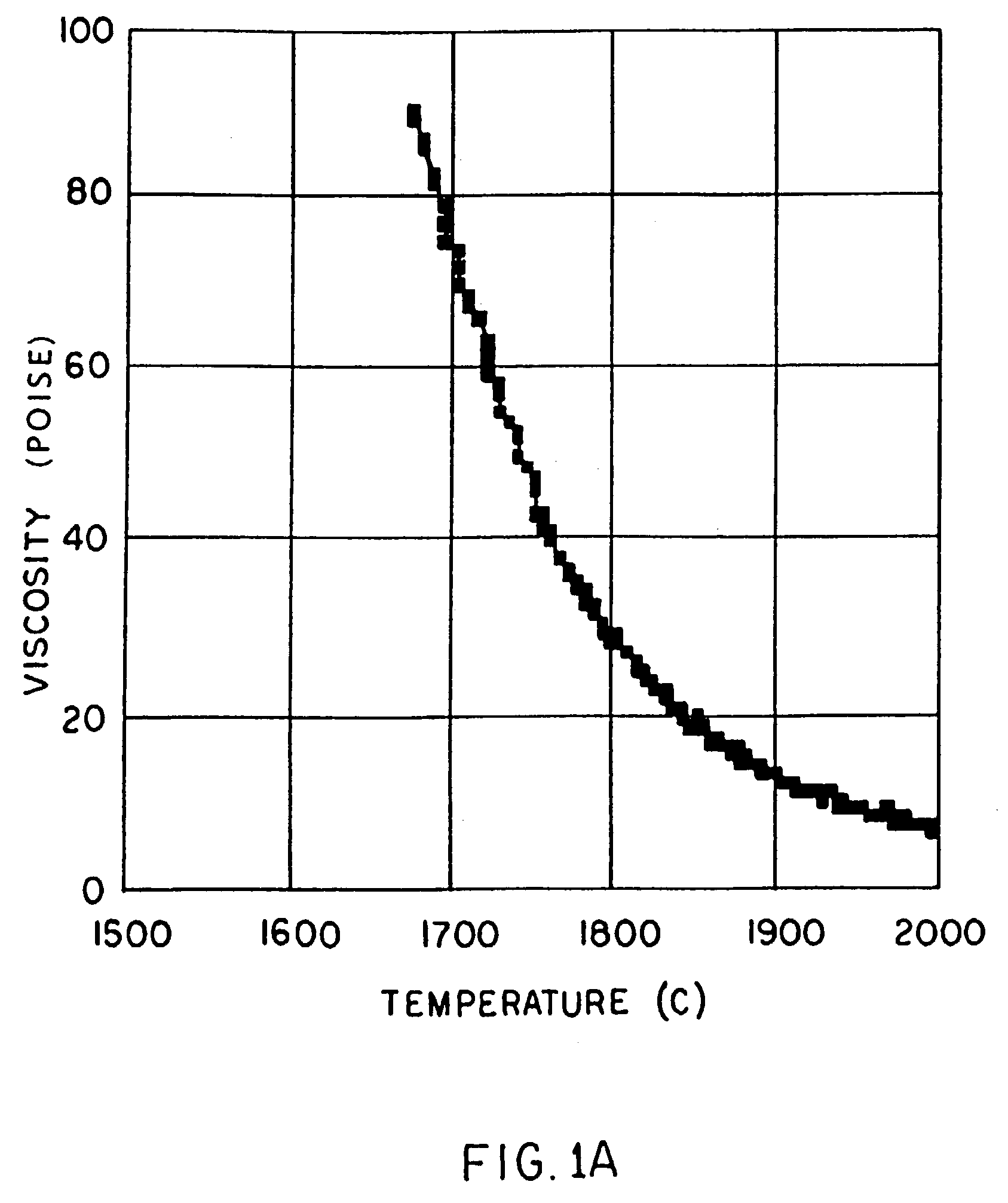High temperature resistant vitreous inorganic fiber
a vitreous inorganic fiber, high temperature resistant technology, applied in the direction of inorganic material artificial filaments, transportation and packaging, yarn, etc., can solve the problems of severe degradation and/or erosion of furnace components, low use temperature limit, and insufficient use temperature limit of these materials, etc., to achieve easy compression, low cost, and high mechanical strength
- Summary
- Abstract
- Description
- Claims
- Application Information
AI Technical Summary
Benefits of technology
Problems solved by technology
Method used
Image
Examples
example 2
[0069] Composition 2 is a fiber blown from a melt comprising about 72.64 weight percent SiO.sub.2, about 22.23 weight percent CaO, and about 3.18 weight percent MgO. The diameter of the blown fiber was 1.27 .mu.m.
example 3
[0070] Comparative Composition 3 was a commercial magnesia silicate fiber spun from a melt comprising 76.46 weight percent silica and 20.87 weight percent magnesia having a diameter of 4.5 .mu.m. Comparative composition 3 demonstrated 11% linear shrinkage after being exposed to temperatures of 1330.degree. C. The inventive calcium magnesia silicate fibers approach this desirable performance, with the advantage of being capable of being produced more economically.
example 4
[0071] Comparative Composition 4 was a commercial calcium silicate composition spun from a melt comprising of 65.36 weight percent SiO.sub.2, 14.34 weight percent MgO and 18.82 weight percent CaO, having a diameter of 4.8 .mu.m. The fiber has a higher linear shrinkage rate at 1330.degree. C. and is more brittle than the inventive calcium silicate fiber after exposure to service temperatures of 1260.degree. C.
PUM
| Property | Measurement | Unit |
|---|---|---|
| temperature | aaaaa | aaaaa |
| weight percent | aaaaa | aaaaa |
| weight percent | aaaaa | aaaaa |
Abstract
Description
Claims
Application Information
 Login to View More
Login to View More - R&D
- Intellectual Property
- Life Sciences
- Materials
- Tech Scout
- Unparalleled Data Quality
- Higher Quality Content
- 60% Fewer Hallucinations
Browse by: Latest US Patents, China's latest patents, Technical Efficacy Thesaurus, Application Domain, Technology Topic, Popular Technical Reports.
© 2025 PatSnap. All rights reserved.Legal|Privacy policy|Modern Slavery Act Transparency Statement|Sitemap|About US| Contact US: help@patsnap.com



